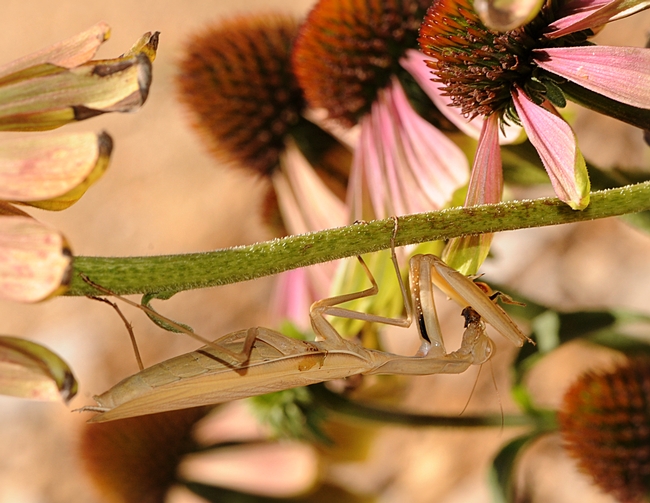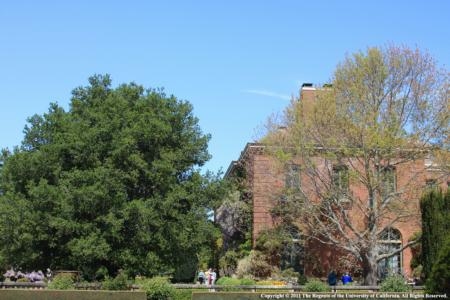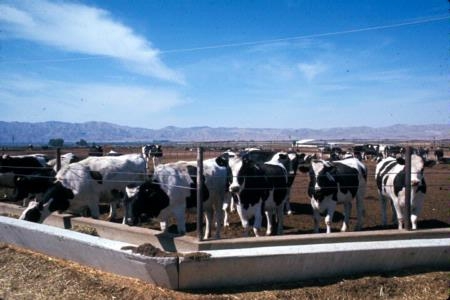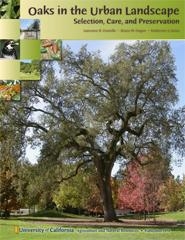UC Blogs
California conservation tillage acreage increasing
The amount of California farmland being cultivated using conservation tillage techniques is continuing to expand, according to a survey by California’s Conservation Agriculture Systems Institute (CASI).
The survey tallies silage and grain corn; small grains for hay, silage and grain; tomatoes, cotton, dry beans, and melons managed as no-till, strip-till, ridge-till and mulch-till – which leave at least 30 percent of residue from the previous crops on the soil surface – in the nine-county Central Valley region. In 2010, such conservation tillage accounted for about 14 percent of the crops’ total acreage, an increase from about 10 percent in 2008. The survey also found that minimum tillage practices – which reduce the overall number of tillage passes by at least 40 percent relative to what was done in 2000 – were used on about 33 percent of crop acreage in 2010, up from about 21 percent in 2008.
There are many potential benefits for using conservation tillage, said UC Cooperative Extension cropping systems specialist Jeff Mitchell. Conservation tillage is credited with water conservation, dust suppression, reduced pesticide runoff into surface water, lowered labor needs and costs, and fuel savings. In addition, limiting tillage helps to keep carbon in the ground and prevent the buildup of greenhouse gases in the atmosphere.
CASI has conducted comparisons of annual row crop acreage farmed under different tillage systems in the Central Valley region since 2004. More than 35 Natural Resources Conservation Service, University of California and private sector experts take part in the survey.
The largest change in conservation tillage acreage from 2004 to 2010 is found in the amount of corn silage acreage that uses strip-tillage. In 2004, there were only about 490 acres of summer silage corn using strip-till, while in 2010 more than 103,000 acres in the San Joaquin Valley dairy region had adopted this form of conservation tillage. The overall use of minimum tillage practices has also greatly increased during this time from about 64,000 acres under reduced pass tillage in 2004 and just over 700,000 acres under minimum tillage in 2010.
California’s Conservation Agriculture Systems Institute involves more than 1,500 farmers, industry representatives, university, Natural Resource Conservation Service and other public agency members. Over the past 10 years, the team has come together to develop information on the costs and benefits of the production system and irrigation management alternatives and to develop long-term sustainability goals. For more information on the body of CT research, see the UC Conservation Tillage website.
Confessions of a Master Gardener
I hate to admit that I am a Master Gardener. People expect me to do everything the right way. You know, to actually follow all those helpful hints you read in books, magazines and garden blogs. Well, don’t tell anyone, but the reality is that I am human. And, I don’t always follow advice - even my own. And yeah, I make mistakes. These next few blogs are the confession of a so-called Master Gardener. Honestly, way too many to contain in a single blog.
I still buy plants on impulse! Just because I like the color of the flowers, without the faintest idea where it will go in my garden, or how to make it grow. And shhhh – I’ve often killed many of those plants. Then there are the plants I can’t seem to get rid of. For example, once I carelessly sprinkled Morning Glory seeds (Ipomoea tricolor) in my backyard. No big deal right? After all they are annuals. They’ll die back in the fall. I had gotten seeds from a friend, who stored them inside an old mason jar. I have always loved Morning Glory because they remind me of my Grandmother in Japan. Her name was Hatsue, but everyone called her Obachan (Grandma). One day, I just carelessly sprinkled all the seeds along the fence. I planned to hang string for the vines to climb upon, once they sprouted. Boy, did I underestimate the tenacity of those itty bitty round seeds.
Year after year, they spout, grow and then manage take over the entire backyard. They will crawl along the ground, climb on the fence, and wrap around bushes and the tree. If I don’t start pulling the sprouts early in spring, my yard will be completely covered by summer. Then as to grandstand the fact they have won, they start to bloom. They seem to mock my every effort to contain them. I do manage to hack them into some kind of submission each year, and then clearing them out in the winter. So here’s a warning to Morning Glory lovers, they can become a highly evasive plant mostly because they reseed themselves. But in the right location, they are very beautiful and provide flowers every morning from early spring until late fall. Every fall, I pull and remove the old vines and sweep up the pods, but I haven’t managed to remove the Morning Glories completely.
But to be honest, I don’t have the heart to completely get rid of the Morning Glory because there is a part of me that loves it when they bloom. Each spring when I see the first tenacious deep purple flowers, it reminds me of Obachan. She was a gentle and quietly stubborn woman, who always managed to get her way - much like these vines. Perhaps Obachan’s sprit has something to do with these flowers coming back year after year. She’s using them to remind me of my Japanese roots and to make sure that I wouldn’t forget her. It appears that the lesson learned from my gardening mistakes don’t necessarily yield only practical knowledge, sometimes they provides lesson for the heart, too.
LA area olive farm produces oil for local markets
In the last two decades, artisanal olive oil production in California has surged as consumers have developed an appreciation for the freshness, high quality and distinctive flavors that good locally produced oil can provide, reported food writer David Karp in the Los Angeles Times.
The story focused on Joyce Lukon, who bought a lot with a view of Topanga Canyon as an investment and tried to make it more attractive for resale by planting grapes and olives. She took classes in the sensory analysis of olive oil taught at UC Davis by Paul Vossen, a Sonoma County farm advisor who has been a prime inspiration of the California artisanal olive oil boom, and he later visited several times to advise her.
Lukon now sells her 375-milliliter bottles of olive oil for $25 each at two farmers markets and online.
Debate over groundwater heats up
Tim Hearden, Capital Press
What to do about declining groundwater supplies was the subject tackled by 100 farmers, environmentalists and government officials during an all-day workshop offered by the University of California Cooperative Extension.
"We need to pay attention, we need to be educated and we need folks to talk to their local leaders and help them understand ... both sides of the issue," said Tehama County supervisor Bob Williams, who is an oat and alfalfa hay producer.
Midyear cuts will spare ag programs
Tim Hearden, Capital Press
The $1 billion in midyear state budget cuts announced by Gov. Jerry Brown won't directly affect agencies that assist farmers and ranchers.
The University of California system will use reserves to absorb its sudden $100 million hit, meaning local Cooperative Extension offices will be able to maintain their services, said Dianne Klein, a media specialist on the UC Office of the President communications staff.
"What the university intends to do, on a short-term basis, is draw upon reserves currently held to pay for unexpected cost in employee health and welfare plans," Klein said in an e-mail. "This, in essence, is a rainy day fund. We've declared a rainy day."
There may be other measures to cover the $100 million loss, but using the health plan fund "represents the lion's share of the cost," she said.
Shutterbug or Shudder Bug?
We usually see praying mantids, aka praying mantises, camouflaged in foliage and lying in wait to ambush prey.But have you ever seen them frying...

Camouflaged praying mantis having lunch. (Photo by Kathy Keatley Garvey)
UC publication lauded in San Francisco Chronicle
The UC Agriculture and Natural Resources publication Oaks in the Urban Landscape will be extremely effective in saving the lives trees, because "it is written clearly, packed with useful information and illustrated with some of the clearest photographs of any horticulture book I've read," said garden writer Pam Peirce in a San Francisco Chronicle column published yesterday.
Peirce noted that authors Laurence Costello, Bruce Hagen and Katherine Jones, are UC Cooperative Extension scientists with many years of experience teaching about urban landscapes. They cover the subject from how to grow an oak from an acorn to how an oak-tree silhouette changes as it matures and ages, and from how to select an oak tree to plant to how to recognize signs of impending death.
The writer concluded her column by saying Oaks in the Urban Landscape is the latest in a series of "terrific books issued by UC ANR" that include:
- Pests of the Garden and Small Farm
- Pests of Landscape Trees and Shrubs
- The Home Orchard
The article advised readers to look for the publications in local bookstores or order them form the ANR catalog or by calling (800) 994-8849.

UC's oak publication addresses not only the above ground portion of the trees, but also what is going on in the root zone.





